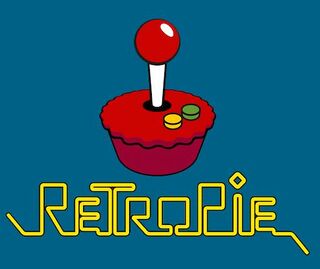Retro Pie Instructions
Initial Unboxing and Setup
When you receive your SD Card it will be ready to plug in to your Raspberry Pi and configure your controller.
First plugin the controller and monitor and power the raspberry pi. Please note that most Pi's require special USB power supplies and cables. If you are using your own then your Pi might not work properly due to insufficient power delivery. This is most common issue with new Raspberry Pi users.
Important! please ensure you have connected the controller and video before you power on the device for the first time.
The system will boot into the controller configuration menu and it will say:
"Hold a Button on your device to configure it"
Proceed with the on-screen instructions. During the button mapping you will be asked for the "HOTKEY ENABLE". This is an important button that will allow you to exit your game. Please choose an available button on your controller for this and remember it. On the Logitech F310 this is the center button with the Logitech logo on it. You may also use the select button on that controller even if you have it mapped already.
Don't worry if you get it wrong. Just continue with the rest of the configuration and you will have another opportunity to correct the button mapping. Once complete you select OK and it will take a few seconds to return to the main menu.
To correct the button mapping just re-enter the menu by rebooting the Raspberry Pi and selecting "Configure Input".
If your controller is so messed up that you can't navigate to the menu then attach a usb keyboard.
Press F4 button and type in the following command:
sudo /home/pi/RetroPie-Setup/retropie_setup.sh Configuration / tools -> emulationstation - EmulationStation - Front end used... -> Clear/Reset Emulation Station input configuration -> Ok -> Then select Cancel -> Back -> select "Perform reboot" -> "Yes"
You will again be presented with WELCOME Screen and provided with an opportunity to "Configure Input".
First Boot
When you first see EmulationStation you may wonder why you don't see systems like the SNES or Game Boy- worry not- they are installed on the system, roms just need to be added to their respective ROM folders before they will become visible. Transferring ROMS are described in the following steps.
How to load games
Format a USB flash or thumb drive using fat32 or vfat Create a retropie folder on a newly formatted drive. Do not use the newly purchased Retro Pie microSD card for this. This must be done on some other flash drive from your personal collection.
Plug it into the retro pie system for 10 seconds.
Then plug it back into your computer.
Open the USB drive in your file explorer. You will now have folders under retropie.
Copy the ROM files into the appropriate folder inside the retropie/roms directory for example snes for super Nintendo roms. ROM Files for games are copyrighted so you will need to obtain them yourself. But they are pretty easy to find if you look around. For tips on how to find these ROMS you can visit my support website.
Eject the USB drive and plug it into the Raspberry Pi. It will take a few minutes to a few hours depending on the amount of roms being copied over. Once your drive led stops blinking you will know its done.
You can then restart emulation station and the games will be available to play.
How to Exit a game
Press Hotkey button + start.
